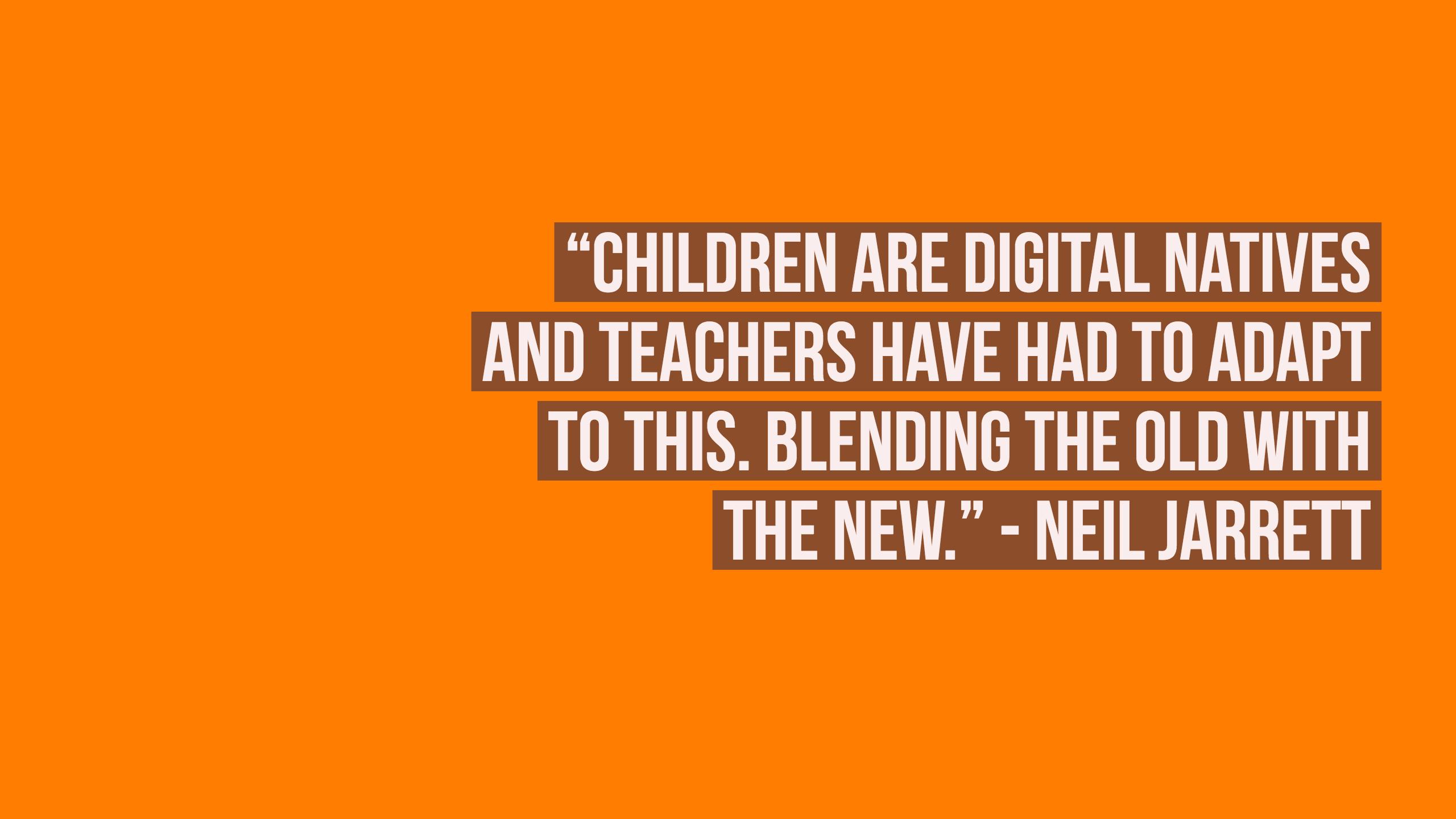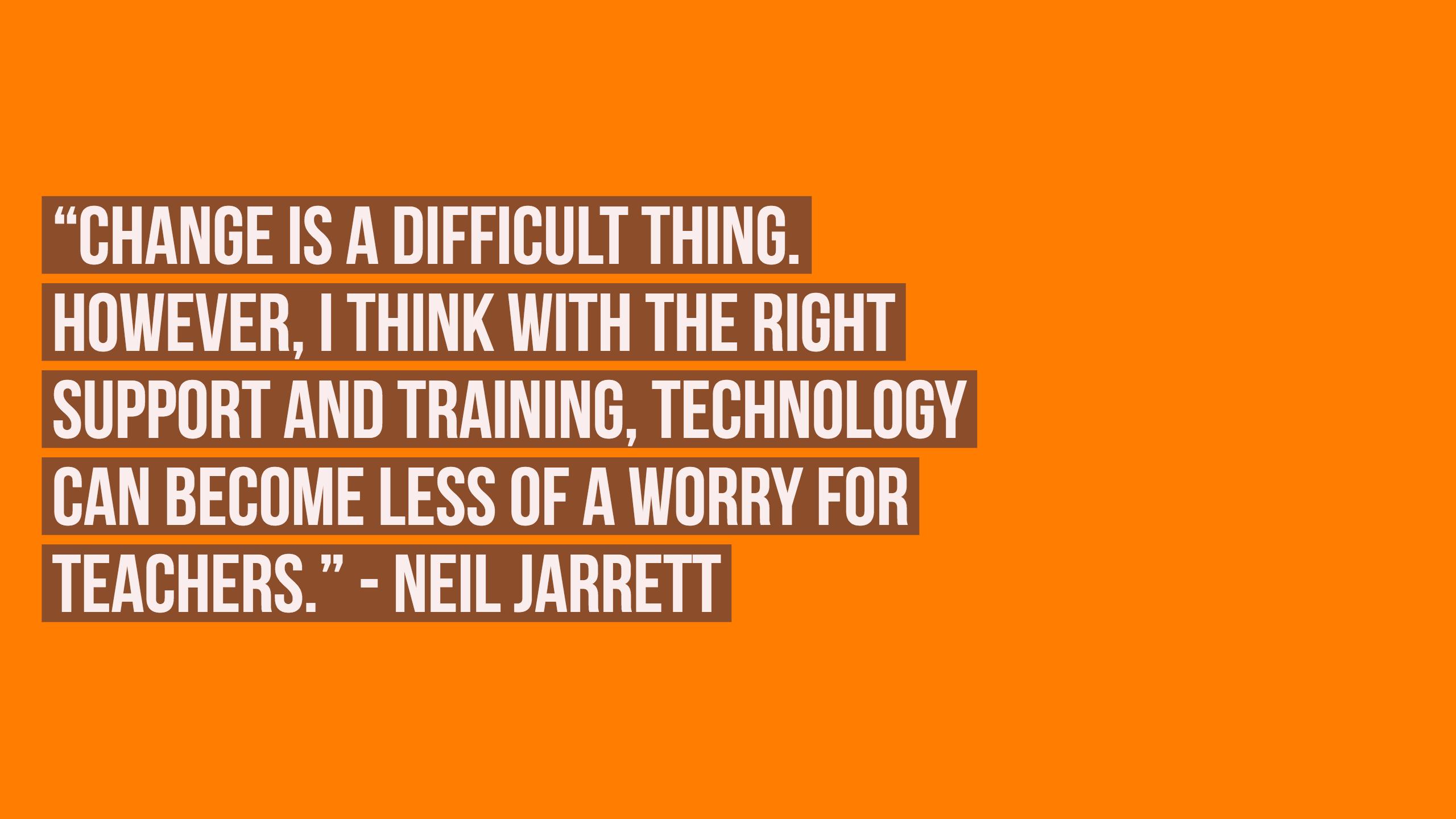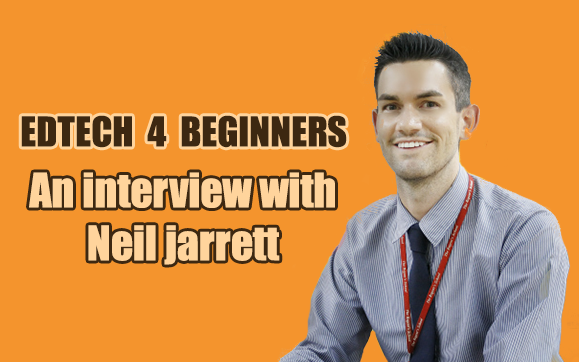EdTech for beginners - An interview with Neil Jarret
 Lucie Renard —
Lucie Renard —
Educational technology is the new big thing in your classroom. Not just this year: it started out a few years back. I’m not talking about PowerPoint, Word or Excel. I’m talking about Kahoot, Padlet, Classdojo, Explain Everything, BookWidgets and so on.
And there are hundreds, even thousands of them, bombarding you with handy features and promises to a more engaged classroom. You know what? It works! Students are not used to this change. And that’s why they like it. It’s something else. And sometimes, something else is just what you need.
In this post you’ll get to know Neil Jarrett, teacher and author behind the successful blog Edtech For Beginners. If you’re in need of some educational technology inspiration and guidance, you should definitely take a look!
From the UK to China
Neil was born in London, but teaches in China. You must be wondering how he ended up there, so I popped the question to him. “I saw an advert in the Times Educational supplement and just went for it! One Skype interview later and I had the job.”
“I hadn’t told anyone as I never thought it would really happen. It was quite a shock for my mum!” - Neil Jarrett
Before he moved to China, he had taught a number of years in London as well. I wondered if there are big differences between the two countries when it comes to teaching. There is certainly one:
“The main difference I have found is that the children [in China] are much more driven and keen to learn.” - Neil Jarrett
A shift in education
Neil has been teaching for 9 years now, so I asked him if he noticed a shift in education.

Neil embraced this new shift by using and testing new ways to bring technology in the classroom. But what about the students and his fellow teacher colleagues. Are they ready for this?
“The children are fearless! They really enjoy trying new websites and apps and often discover new tech themselves. My colleagues have always been supportive and often come to me for ideas and support.” - Neil Jarrett
When his school introduced a 1:1 device policy in which each child brings in an iPad, Neil realised he had to find innovative ways to use tech. “The main advantage is how it allows children to collaborate on projects and share ideas and knowledge.”
“In addition, I started my blog about edtech because I think it is the future of learning. There are so many opportunities for collaboration and creativity. I find new ideas from colleagues, Google, and looking on app stores for new content.” - Neil Jarrett
Convincing teachers to adopt technology in their classroom in not that easy.

EdTech 4 Beginners: tips
In Neil’s blog EdTech4Beginners, he talks about fun and handy tools a teacher can use in the classroom. Neil has tried out and written about hundreds of apps. So he must have a favorite tool as well. What’s his golden tip? “I love using ClassroomScreen.com. It’s great for preparing for the school day and organising lessons and resources. Have a go!”
Modern learning is becoming more and more important. Microlearning, blended learning and flipped classroom, mastery learning, differentiation, personalization, etc., are the new big trends in education. So maybe there’s an app that helps teachers with this “modern learning” and “modern teaching”?
“Google Classroom has changed the way I teach.” - Neil Jarrett
“I can flip lessons by posting a resource on the ‘wall’, the pupils access it in their spare time, then the lesson follows on from there. This saves a lot of time and the children really enjoy it. They can ask questions and get help whenever they need it.” - Neil Jarrett
I hope this interview has inspired you to start using technology in the classroom. You can follow Neil on Twitter, Facebook and of course, on his blog.


